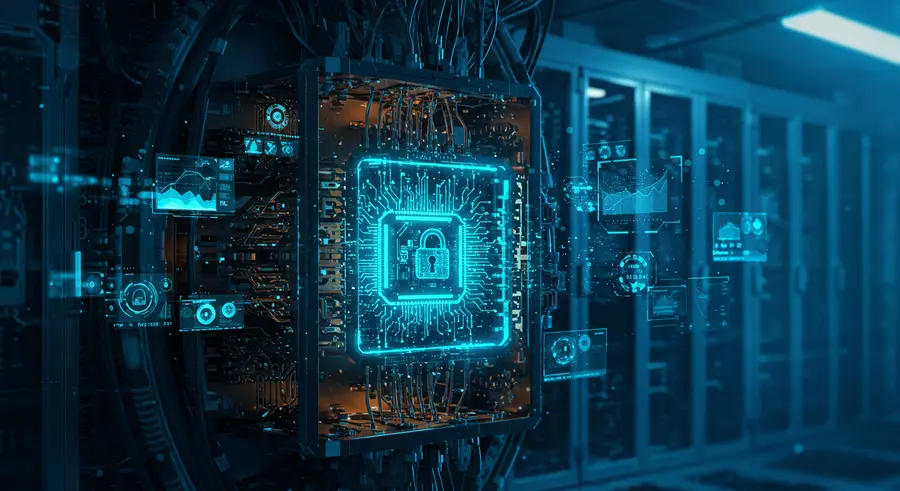Appearance

Welcome, digital guardians and tech enthusiasts! 👋 Today, we're delving into a topic that's as fascinating as it is critical for our digital future: Quantum Computing's Impact on Cybersecurity. It's a realm where the lines between immense potential and significant peril blur, presenting both groundbreaking solutions and unprecedented challenges.
What is Quantum Computing Anyway? 🤯
Before we dive into the cybersecurity implications, let's quickly demystify quantum computing. Unlike classical computers that store information as bits (0s or 1s), quantum computers use qubits. Qubits can represent 0, 1, or both simultaneously through a phenomenon called superposition. They can also be entangled, meaning their states are linked, even when physically separated. This allows quantum computers to process vast amounts of information in ways classical computers cannot, leading to exponential increases in computational power for certain types of problems.
For a more in-depth look at the foundations, check out the Fundamentals of Quantum Computing in our catalogue.
The Looming Threat: Breaking Modern Encryption 😱
The most significant concern surrounding quantum computing is its ability to break current cryptographic standards. Modern encryption methods, like RSA and ECC (Elliptic Curve Cryptography), rely on the computational difficulty of certain mathematical problems (e.g., factoring large numbers or discrete logarithms). These problems are practically impossible for classical computers to solve within a reasonable timeframe.
However, quantum algorithms like Shor's algorithm are designed to solve these problems efficiently. This means that once powerful enough quantum computers exist, they could potentially:
- Decrypt sensitive data: Confidential information, financial transactions, and national security data encrypted with current methods could become vulnerable.
- Forge digital signatures: The integrity of digital communications and transactions, which rely on digital signatures, could be compromised.
- Undermine secure communication: VPNs, TLS/SSL protocols (which secure our web browsing), and other secure communication channels could be easily breached.
Imagine a world where your online banking, email, and even government secrets are no longer secure! This isn't science fiction; it's a future we need to prepare for.
Quantum as an Ally: Enhancing Cybersecurity 🛡️
It's not all doom and gloom! Quantum computing also offers incredible opportunities to enhance cybersecurity:
- Post-Quantum Cryptography (PQC): This is the development of new cryptographic algorithms that are resistant to attacks by quantum computers. Researchers are actively working on PQC to secure our data in the quantum era. Examples include lattice-based cryptography, hash-based cryptography, and multivariate polynomial cryptography.
- Quantum Key Distribution (QKD): QKD leverages the principles of quantum mechanics to establish unhackable encryption keys. Any attempt to eavesdrop on the key exchange would disturb the quantum state, immediately alerting the communicating parties. This offers a theoretically perfectly secure way to distribute encryption keys.
- Faster Threat Detection: Quantum machine learning algorithms could process vast datasets of network traffic and identify anomalies or malicious patterns much faster and more accurately than classical systems. This could lead to real-time, proactive threat detection and response.
- Secure Multi-Party Computation (SMC): Quantum computing could enhance SMC, allowing multiple parties to collectively compute a function over their inputs while keeping those inputs private. This has significant implications for privacy-preserving data analysis and collaboration.
Preparing for the Quantum Leap 🚀
The transition to a post-quantum cryptographic world will be a massive undertaking, requiring significant investment and collaboration across industries and governments. Here are some key steps:
- Inventory Cryptographic Assets: Organizations need to identify where and how encryption is used across all their systems and data.
- Monitor PQC Standards: Stay updated on the latest developments in post-quantum cryptography and participate in standardization efforts.
- Develop Migration Strategies: Plan for the phased implementation of PQC algorithms, starting with the most sensitive data and critical infrastructure.
- Invest in Quantum Education: Train cybersecurity professionals in quantum computing concepts and quantum-safe security practices.
The Dual-Edged Future is Now ⏳
Quantum computing is not just a distant dream; it's an accelerating reality. While it presents significant challenges to our current cybersecurity paradigms, it also offers powerful tools to build a more secure digital future. By understanding both its destructive potential and its constructive capabilities, we can proactively prepare for the quantum era.
Stay curious, stay secure! ✨